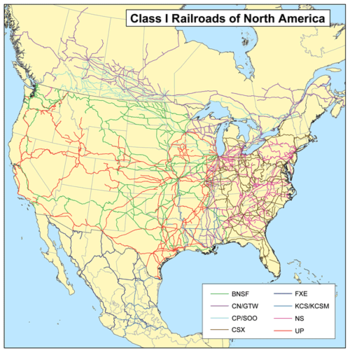Will U.S. Look Inward for Supply Chain Solutions?
An interesting online article from Area Development magazine takes a look at just how likely it is that we'll see a rapid move to intermodal supply chain solutions by North American companies.

To support this theory the writer points to an impressive 30 new inland port operations that are now functioning or in the works since the turn of the century. Two-thirds of these are also new as of the past five years, showing the increasing vitality of the trend.
Where unloading facilities open, storage and distribution centers are sure to follow, and the fact that rail freight volume has quadrupled in the last 25 years makes the resurgence of rail connections a very real phenomenon.
The domination of shipping ports and trucking companies has made the coasts the center of attention for as long as most supply chain professionals can remember. Of course goods move all over the country from there, including plenty of internal distribution points, but the promise of rail is that there are towns all along the lines in desperate need of economic regeneration.With development funds being channeled as widely as Ohio and Pennsylvania to Tennessee and New Mexico, a majority of the country stands to compete for the potential new business that new inland facilities bring.
Some of the driving factors here are positive, others less so. We wrote last year about the potential to bring back the true appeal of "Made in the USA," which many Americans value and would help to kick the economy on to the next step of its recovery.
On the downside, the lack of investment in our roads and bridges is forcing supply chain planners to reevaluate the risk and costs associated with trucking, which helps to make planners pause for thought when it comes to taking advantage to train moves.
In reality, the future of cargo movement will be a carefully crafted blend of sea, rail and road freight (with air reserved for those vital, valuable items that your purchaser simply must have tomorrow!) The revitalization of the country's railroads and internal distribution points is nonetheless something to be celebrated, and a trend that the industry will be watching intently.